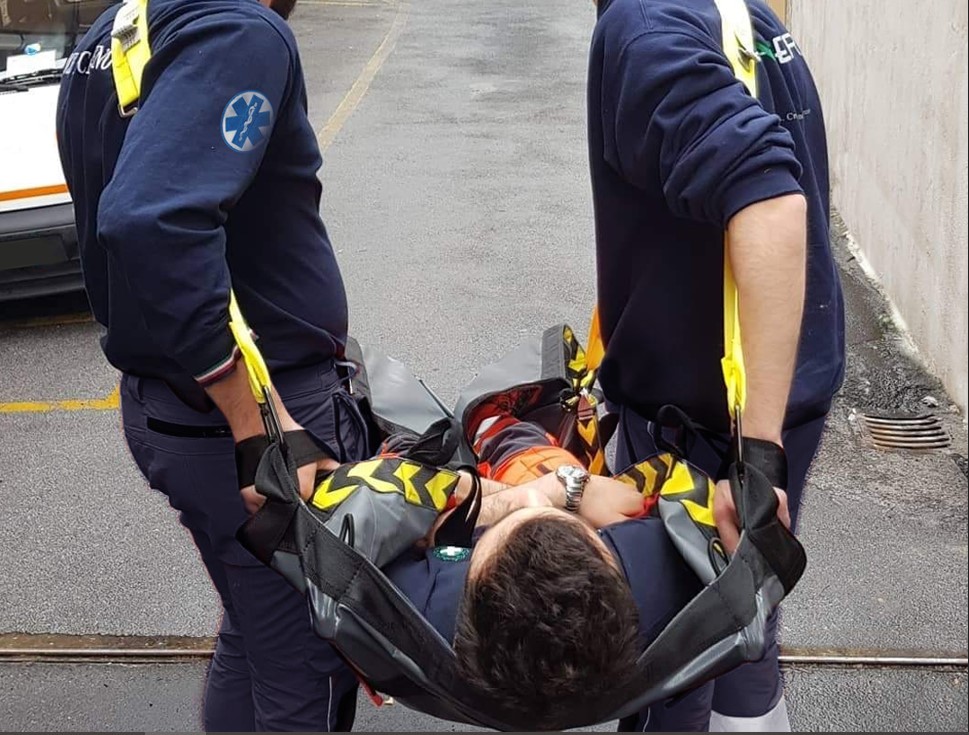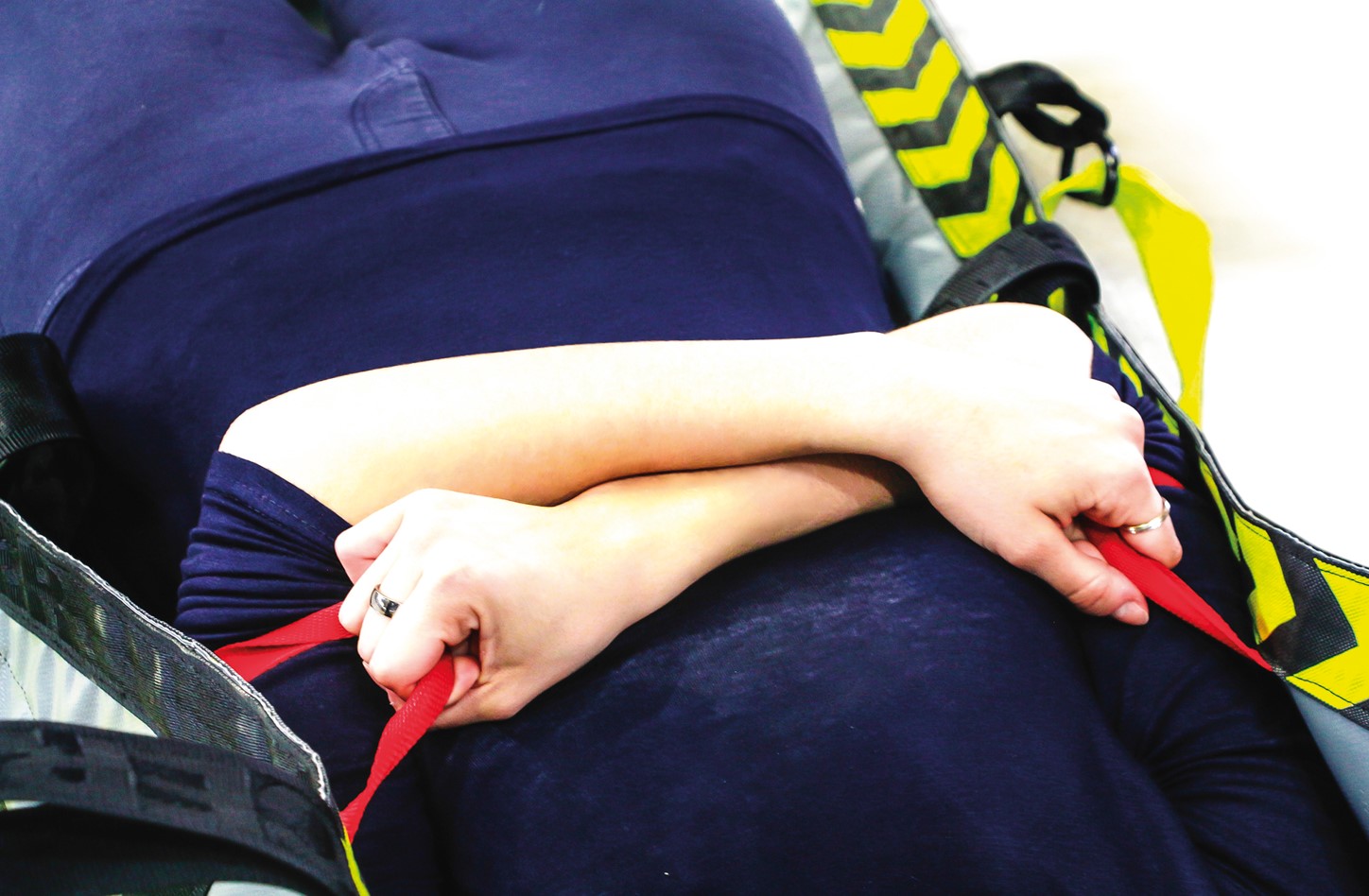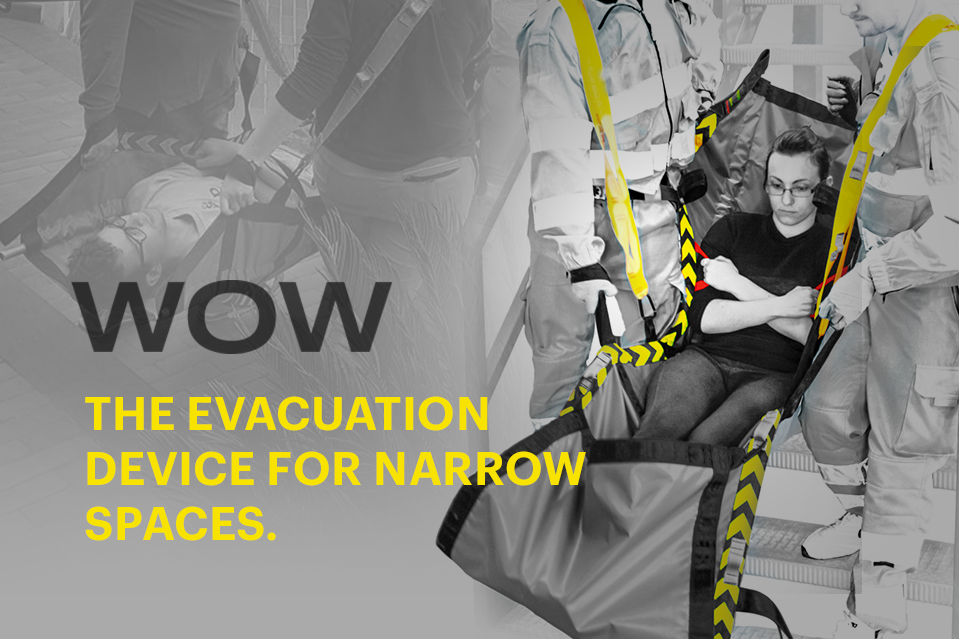
Emergency evacuation and transportation of injured people: WOW is the carry sheet that makes a difference
Despite the evolution of stretchers, carry sheets remain an indispensable aid in certain rescue situations
Let us be clear, especially for the reader not directly involved in rescuing patients: the stretcher is truly phenomenal in major emergencies, when time is short and the scenario is devastating.
However, it is also essential in less impactful and more everyday emergencies (think stretcher-to-stretcher transfer), but provided that the patient has not suffered trauma, especially spinal trauma.
It is therefore an instrument of choice when the patient’s clinical picture does not foresee the use of rigid aids (for limb, thoracic or spinal trauma).
In other cases, skilful use of the stretcher makes all the difference, including for the rescuer’s good health.
Use of carry sheets
The use of carry sheets starts with the correct positioning of the casualty, who should be placed on his/her side.
The sheet should then be folded in half (on the long side of the sheet), taking care that the handles remain under the sheet, and not between it and the patient.
Of the two folds, the upper one should be folded further in half.
The sheet is then placed under the rescued person’s back.
Two rescuers then rotate the patient on the sheet until it is placed on the opposite side.
The sheet is then unrolled and the patient is placed on it in a supine position.
It is good practice for the rescuer to ensure that the patient is placed exactly in the centre of the sheet.
The rescuer should place their hands within both handles corresponding to their position.
The central handle of the sheet is for the two rescuers, one on each side.
It must be said that, in order to safeguard the backs of the rescuer and the patient, it would be best to intervene in teams of three.
One of the rescuers then, according to many protocols, takes care of the part of the sheet corresponding to the patient’s feet.
The emergency transport sheet that reduces unnecessary strain
Carry sheets are, as mentioned, an indispensable aid.
But every rescuer knows that, in daily practice, it can lead to muscle strains and fatigue, as well as skeletal problems such as back pain.
Not so if you use Spencer’s weight-bearing drape: WOW has in fact been designed and realised to distribute the load not on the arms of the operator but on the shoulders.
But this is not the only problem that WOW anticipates and solves: another limitation of emergency transport sheets, which Spencer has analysed and filed away, concerns the transport of the wounded patient in evacuation scenarios, especially of buildings with staircases: the presence of aluminium poles/reinforcements (aluminium telescopic rods) acts by increasing the rigidity of the sheet.
This latter factor on the one hand facilitates the correct positioning of the patient, and on the other hand allows for transport in a seated position, when this is necessary.
These features make WOW unique: in the moments that count, it is the equipment that makes the difference.
Read Also
Emergency Live Even More…Live: Download The New Free App Of Your Newspaper For IOS And Android
Emergency Equipment: The Emergency Carry Sheet / VIDEO TUTORIAL
First Aid In Road Accidents: To Take A Motorcyclist’s Helmet Off Or Not? Info For The Citizen
Spencer WOW, What’s Going To Change In Patient Transport?
Spencer Tango, The Double Spinal Board That Ease Up Immobilization
Vacuum Splint: Explaining The Spencer Res-Q-Splint Kit And How To Use It
MERET Emergency Backpacks, Spencer’s Catalogue Is Enriched With Further Excellence
Emergency Transfer Sheet QMX 750 Spencer Italia, For Comfortable And Safe Transportation Of Patients
Cervical And Spinal Immobilization Techniques: An Overview
Spinal Immobilization: Treatment Or Injury?
10 Steps To Perform A Correct Spinal Immobilization Of A Trauma Patient
Spinal Column Injuries, The Value Of The Rock Pin / Rock Pin Max Spine Board
Spinal Immobilisation, One Of The Techniques The Rescuer Must Master
Electrical Injuries: How To Assess Them, What To Do
RICE Treatment For Soft Tissue Injuries
How To Carry Out Primary Survey Using The DRABC In First Aid
Heimlich Maneuver: Find Out What It Is And How To Do It




